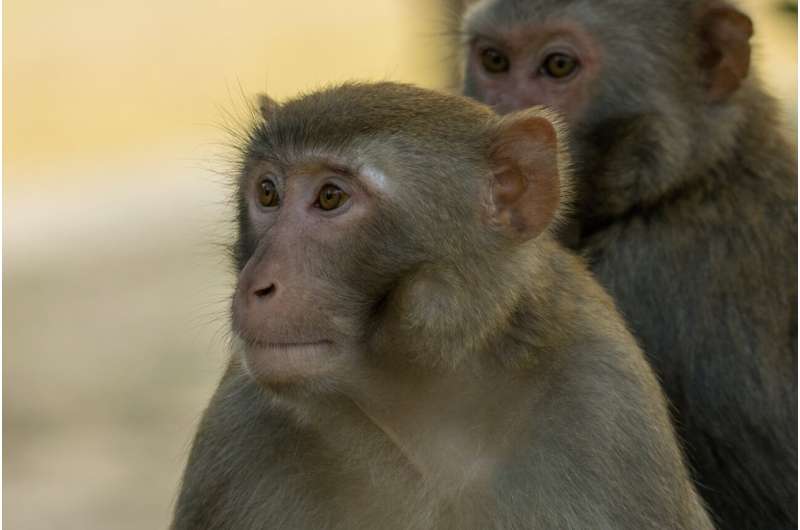This article has been reviewed according to Science X's editorial process and policies. Editors have highlighted the following attributes while ensuring the content's credibility:
fact-checked
peer-reviewed publication
trusted source
proofread
Researchers propose radical change in how animal facial expressions are defined and studied

Researchers have developed a new method to analyze facial expressions, as part of efforts to better understand animal communication.
The human Facial Action Coding System, or FACS, was originally created in the seventies to break down facial expressions into individual components of muscle movement, called Action Units (AU).
Behavior experts have combined this system with the Social Network Analysis, which is used to measure relationships between muscle movements, to develop a statistical package known as NetFACS.
The process allows researchers to answer questions about the use of specific facial movements, the combination of movements, and the facial communication system as a whole in humans and non-human animals.
Dr. Jerome Micheletta from the Center for Comparative and Evolutionary Psychology at the University of Portsmouth, said, "Communication is a defining feature of sociality, and faces offer others a wealth of information about identity, intentions and sometimes emotions.
"Despite this, we know little about what makes facial communication complex, and how to distinguish between species that have sophisticated facial communication, and those that don't.
"While the FACS system helps label facial movements precisely and objectively, this new framework can be used by researchers to analyze them, and ultimately improve our understanding of the evolution of communication across species."
Furthering our knowledge of animal behavior is important, as it puts us in a stronger position to understand conservation problems, and evaluate the importance of human-related threats.
Professor Bridget Waller from Nottingham Trent University added, "We see facial expressions as facial movements that are linked with each other, interacting to produce a way to communicate. Our method considers the dynamic nature of facial expressions and therefore, better reflects its complexity."
The NetFACS project is a collaboration between the universities of Portsmouth, Nottingham Trent, Lincoln, St Andrews and the French National Center for Scientific Research.
The team has trialed the NetFACS system by examining three species of macaques (rhesus, Barbary and crested).
"The interesting thing with these species is that they vary in social tolerance, and therefore social complexity," explained Dr. Micheletta.
"It's widely believed that animals living in large groups with greater complex relationships and social roles, will demonstrate greater and more complex communication."
To test this theory, experts have coded facial behavior of macaques in more than 3,000 social interactions across the contexts of aggressive, submissive, and affiliative.
Using the Facial Action Coding System for macaques (MaqFACS), the team found the more tolerant species of macaques had more complex facial communication.
Their paper, published in eLife, says crested macaques use a higher diversity of facial behavior more often, compared to Barbary and rhesus macaques.
Lead author, Dr. Alan Rincon, said, "We were able to predict whether an animal was being aggressive, submissive or affiliative from their facial behavior MaqFACS better than chance in all three species.
"However, prediction accuracy was lowest for the more tolerant and socially complex species, the crested macaques, indicating that they have a more complex facial communication system.
"Overall these results support the predicted link between social and communicative complexity and therefore help us better understand the evolution of communication."
Dr. Micheletta added, "Our next steps are exploring the facial repertoire of macaques in more detail, looking at how social factors such as social status and social integration are linked to facial communication.
"We also plan to look at the relationship between the nature and quality of social relationships (dominance relationships, kinship, social bonds) and facial communication. We would also continue to develop NetFACS, in particular implementing functions that would allow us to study the temporal dynamics of facial communication in more detail."
More information: Alan V Rincon et al, Higher social tolerance is associated with more complex facial behavior in macaques, eLife (2023). DOI: 10.7554/eLife.87008.3
Journal information: eLife
Provided by University of Portsmouth


















